I returned to Thailand in November with a goal to connect with permaculturally minded people and projects around the region, making as many contributions and exchanges of resources as possible along the way. What I discovered in my travels was far more than I ever could have anticipated! I am excited now to be able to share my experiences with you in hopes that it will provide a resource for all those interested in exploring the expansive world of Thailand Permaculture.
In Part 1 of this series I described my revisit to Rak Tamachat, a Permaculture education centre in central Thailand that I had participated in developing only a few months prior, and the community integration work that was taking place there. Then I traveled north to Chiang Mai where I connected with many friends and allies in the region. I visited Chiang Mai Life Construction, PermaPai, and ended the with more community integration and development at The Panya Project.
Moving ahead…
After the dust settled from the holidays, The Panya Project was gearing up to begin two months of natural building internships where they would be completely rebuilding the main community structure on the property, the aging Panya Sala. This, of course, meant they would have to demolish the existing Sala. Obviously, a project of this magnitude was sure to disrupt normal daily activity at the site. On the prospects of such disruption, and to avoid interfering with the arrival of a host of natural building interns, I said my goodbyes to friends at The Panya Project, knowing that I would likely see them all again in due time, and once again set off for the tousled mountain road to Pai.
My friends at Panya had already filled me with many great stories of the annual Rice Harvest Festival hosted by Tacomepai and, although I had already been to Pai twice during my exploration of Thailand, I had yet to make my way around to visiting the infamous bamboo architecture of this organic farm and homestay. A festival of music, food and culture was all then invitation I needed.
TacomePai
Tacomepai, situated just about 15 kilometers from central Amphoe Pai, is a combination of many things. Spun out of the inspiration of Sandot Sukkeaw who, after witnessing the degradation of his hometown environment, set out to inspire an alternative lifestyle to the consumption-to-waste pattern that was beginning to make its mark on even the most remote regions of Northern Thailand.
Having all the knowledge of how to lead a life that did not pollute the rivers and leave plastic on the roadside, Sandot established Tacomepai as a homestay, organic farm and a multicultural community learning centre. Distinguishable by its creative bamboo and natural structures, built entirely from onsite and local materials, Tacomepai offers a unique experience for the intrepid backpacker. An opportunity to learn and participate in a more natural life through the traditions of native Thai culture.
More than just an inexpensive stay in the whimsically hand-built bamboo structures, Tacomepai offers an immersion in a traditional Thai Hill Tribe lifestyle blended with modern permaculture influences. People from all around the world seem to gravitate toward this rich cultural experience, which only further enhances the opportunities for discovery.
The Rice Harvest Festival

After the rice harvest Tacomepai puts on their annual Rice Harvest Festival – Photo by Toni Robinson
Just after the rice is harvested and the fields lay open, Tacomepai hosts their annual Rice Harvest Festival featuring live music, workshops and entertainment of all sorts. A cocktail of world cultures, the Rice Harvest Festival invites native and traditional performers from around the region, and around the world, to share and practice their unique art. Hill Tribe dances, music and art, mixed together with modern art and a variety of world performances, the Rice Harvest Festival appropriately expresses the very distinct culture of Amphoe Pai, Thailand. Blend in permaculture, bamboo crafting, yoga and other arts and crafts workshops and the results are uniquely genuine!
My arrival
Upon arriving at the gate I again ran into my friend Lilly Zeitler from the PermaPai project. As luck would have it, I arrived at the Rice Harvest Festival just in time to stretch out my road weary body in a yoga workshop. As we made our way to the yoga treehouse (quite literally a small yoga studio treehouse) we bumped into an unexpected mutual friend. I had not seen Jacinta since March when she attended the very first Permaculture Design Course at Rak Tamachat. As it turns out, she later moved to Tacomepai where she took another Design Course with the PermaPai pioneers, Lilly and David, and Tacompai’s own, Sandot Sukkeaw. It was great to see the passion that permaculture has inspired in her life and the direction it has taken her.
After loosening up with a bit of yoga, I strolled down to the rice fields where food was just beginning to be served. Staying true to the ethics, the food was served on split bamboo platters with forks, spoons and cups all carved from bamboo or other natural materials. This is a wide divergence from the way most food is served in Thailand today. Almost everything you might buy at a typical Thai market these days is served on a styrofoam tray or in a plastic bag that is then placed in another plastic bag (with handles!) and then garnished with plastic utensils, straws and/or whatever else you might need in plastic form. If needed, this package is then reenforced with additional plastic bags until such time as it is deemed safe for transport.
A not-so-wasteful aside about waste
As a foreigner in Thailand, I quickly learned and became accustomed to politely asking not to have my purchases put in a bag. The phrase ไม่ใส่ถุงครับ or “mai sai thong, krap” has saved me a load of waste and guilt while traveling.
During our time at Rak Tamachat, the members of our community were all very appalled about the waste situation in our rural district. Not only was the overuse of plastics prevalent, but the disposal of them was highly distressing to our ecologically conscious permaculture community. The common practice in many rural areas seems to be piling plastic bags, wrappers and other waste products together and setting fire to it all. Small trash fires are a daily occurrence in many rural villages of Thailand. Trash dump sites (typically unofficial dump sites) lay along many common roads where trash accumulates until it is again raked together and burned.
Despite the appalling nature of this practice, I actually found it to have a profoundly positive impact on the members of our community. In the West, we generally accumulate and dispose of trash in a much more insidious way. The plastic bags and wrapper pile up inside our large plastic trash bins (usually lined with yet more plastic) and then set out on the curb to be taken “away” somewhere. Somewhere where we won’t have to see it again. But, as we all know, the “away” that these waste products go to is really no better than the side of the road. Buried in a landfill or burned in an incinerator, the results are not much different then what we were facing here in Thailand.
The major difference was that we could not escape the reality of our wasteful behavior in rural Thailand. The “away” was much less convenient than placing our wastes into a wheelie tote and setting it out on the curb… and it was much more conspicuous than some far off landfill. The transparency of our consumption and waste stream became glaringly obvious… unavoidable even.
In response to this challenging awareness, we developed a practice of making bottle bricks to use in our adobe walls. Although still likely not the most ideal disposal of these waste products (incasing them in adobe is really no different from putting them in a landfill, right?) it did put us, quite literally, in direct contact with every single piece of plastic that we brought on site, as each bag and wrapper had to be handled directly in a time consuming, and often foul smelling, process of compressing into it all into plastic bottles. This had a profound impact on our individual behavior… even to this day I am much more conscious of all the little bits of waste left in my wake as a human living in this modern, or so called “civilized” society. I now carry around my own bags, a set of wooden utensils, a couple of handkerchiefs and a tin cup in my personal attempt produce no waste.
One of the Rak interns even took this conscientious practice into her advanced permaculture education through a personal waste reduction design project for her Permaculture Diploma.
As you can probably imagine, it was quite a relief to be in an environment where my highly developed sensitivity toward inorganic waste was understood and shared. Despite my tangental aside, Tacomepai wasn’t really doing anything radical by avoiding the use of plastics. Truth be told, they are ultimately just upholding a more traditional use of resources. Plastic, in any culture, is still a relatively new development. In Thailand, until rather recently, nearly everything was packaged in bamboo, banana leaves or other biodegradable natural containers. The real beauty is not in Tacomepai’s use of natural materials so much as their reintroduction of these local solutions to the growing waste epidemic.
The New Land Project
The Rice Harvest Festival continued to inspire and amaze traditional music, dances and amazing performances from all over the world. Scanning the beaming faces within the audience, the feeling was indisputable, everyone was enjoying the beauty of the festival and it wasn’t long before dancing erupted to the sounds of traditional Japanese drumming.
- Enter the Rice Harvest Festival
- Bamboo Water Feature at Tacomepai
- Simple bamboo door latches
- Torches made from natural and recycled materials
- Traditional bamboo basket weaving workshop
- Macrame workshop at Tacomepai’s Rice Harvest Festival
- The Swinging Classroom of Tacomepai
- One of TacomePai’s many artistic bamboo structures
- Lilly rocks the harmonica
- Amazing Japanese drummer got everyone on there feet
- The Rice Harvest Festival even has a place for the banjo
- The Hill Tribes of Northern Thailand
- Traditional Hill Tribe fire dancing
- Traditional Hill Tribe Dancers
- Beautiful happy faces beaming from the audience
- Traditional fire dancing performed by a native Thai Hill Tribesman
- Traditional Chinese Dragon Dancers
- Enjoyment
- A Bulgarian Choir sang songs of the forest
- A dog like dragon with antlers gobbles up donations with a wag of it’s tail
- Chi and his wife share their stories through beautiful harmonies
The next day was met with more yoga, a bit of cake and a heap of constructive workshops. Taking my time to do some discovery and observation in the light of day, I came across some of the finer features at Tacomepai, including: very simple yet elegant bamboo door latches, lanterns from bamboo and recycled materials, and interesting water features.
I was also impressed and inspired by Tacomepai’s vision for their New Land Project.
Tacomepai, together with friends at the Sangob Foundation (more on them in just a moment), recently put a campaign together on WeTheTrees.com, a permaculture crowd-funding website, to raise funds for the purchase and development of this New Land Project. The vision is to expand upon the farm and the permaculture practices already taking place at Tacomepai as well as provide an example for local people a means to sustainable agriculture without the use of chemical and ecologically destructive practices.
Solutions to Slash-&-Burn
One of the most ancient and traditional farming methods practiced by the hill tribes of northern Thailand, once sustainable, has become fiercely ruinous. In the dense tropical forests, slash-and-burn agriculture, performed on a very small scale, can be a sustainable and productive way to provide for a small family or tribe. So long as the natural forest is given ample opportunity to regenerate and the lungs of the earth (forests, wetlands and ocean algae) are in full working order, even the carbon emissions from burning are reabsorbed and create no longterm ill effects. However, as populations explode and the influences of exportation, monoculture, and industrialized production methods increase, so does the demand to clear ever-increasing expanses of forest. Rapid deforestation results in erosion, nutrient leaching and devastating soil loss. The nutrient deficient and eroded soils are then responded to with increased chemical usage, tillage and further ecological degradation.
After 7-8 years, the soils under cultivation become so poor that farmers have little alternative but to cut and burn more forest, further perpetuating this vicious cycle. It is estimated that in 2012 Thailand lost 134 thousand hectors (over 330,000 acres) or nearly 4% of it’s total forest coverage.* How much of that was due to slash-and-burn is unknown but, considering that timber is a highly regulated industry in Thailand, it is likely the proportion of loss due to this agricultural practice is significant.
The New Land Project hopes to reverse this trend by providing alternatives to slash-and-burn and chemical agriculture. The New Land itself, before being acquired by Tacomepai and friends, had been deforested and used for chemical monoculture production for at least 10 years. In regard to providing an example of what can be done with permaculture techniques and strategies, this land could not have been more aptly chosen.
Permaculture is about restoring damaged ecosystems and returning them to healthy productivity. It’s a complete inversion of modern slash-and-burn, whereby healthy ecosystems are destroyed and degraded through stripping away the biomass and replacing it with chemical supplements that further distort and destroy biological processes. Permaculture is a method of inclusion – increasing biomass and biological activity while also making the environment productive for human needs, thus obtaining a yield from a regenerative ecological system that increases in productivity over time.
As more and more natural forests disappear and existing agricultural land becomes increasingly degraded, these restorative systems, and projects like Tacomepai’s New Land, will be a beacon of hope in the dimming twilight of industrialized agriculture. As it turns out, the people of Thailand are beginning to heed the not so metaphorical signal fires of needed change.
A Village Against Development
The last night of the Rice Harvest festival was marked by even more enchanting performances. One that particularly stood out was the performance by Chi Suwichan. A combination of beautiful melodies, a witty sense of humor and a profoundly deep cultural awareness, Chi’s performance easily captivated the audience.
After his performance, Chi invited everyone out to his home village for the presentation of a short film on current issues facing the Karen peoples (one Thailand’s many hill tribe ethnic groups). Not realizing the scope of what we were in for at the time, Lilly and I decided we were going to take him up on this offer… and try to rally as many people as we could to join us.
The next day we gathered around the Tacomepai library, a group of ten enthusiastic adventurers, and made preparations for the trek ahead. Together with our two guides, Dillon and Laurent from the Sangob Foundation, we hopped on our motorbikes and set out into the mountains.
The beautiful landscapes alone would have made the trip a worthwhile adventure. Coursing mountain streams and drifting valleys colored the sweeping topography. As we ventured deeper into the mountains, the air cooled and the landscape began to take on some surprisingly new characteristics. A faint whisper of pine filled the air as the forest shifted from deciduous tropicals to the evergreen conifers of the more temperate mountain climate.
We arrived in the village at the home of Chi’s family as the day was beginning its fade into early evening. Already the change in elevation was made evident as a faint chill set in with the dwindling daylight. We gathered in the large wooden hearth as Chi’s mother served us tea and prepared a meal for this unexpected lot of foreigners.
As we discussed various cultural distinctions, such as salted tea, I found myself admiring the architecture of the building we had settled in. Oriented to the winds for natural airflow, with a fireplace near the center, it was obvious this was a long adapted design for this specific climatic region. Refined and simplistically prudent design, this is what learning from the local wisdoms is all about!
While the conversation meandered, my attention shifted back to the people in the room. Lilly, a fairly fluent Thai speaker, had made an interesting observation on our way into town. The name of this little village bore a striking significance to our reasons for coming. A symbol of the awareness of this remote village, Baan Maay Pha-Tha-Naa, was a village against development. The translation of Baan Maay Pha-Tha-Naa can be taken a few ways (literally it translates to “village not developed” but would more likely carry the meaning of “village against development”) however one my choose to translate it, clearly, this village was named with intention.
At this, we were ushered into a room of the adjacent house where a venerable feast was humbly arranged on a mat stretched across the floor. We sat and began to eat as more and more food was brought out to us and we considered the question: “What would it look like if 10 foreigners were to show up unannounced at house in our own respective cultures? Would they be treated with this same level of hospitality?”
What about you, if a large group of Thai people showed up at your door, would you invite them in, offer them tea, prepare a large meal for them and offer them all a place to sleep for the evening? Would you smile as they fumbled with your language and disrupted your daily routine? And would you offer them up all the things you could to make their stay more comfortable? An interesting set of questions to contemplate… and a truly humbling recognition of the beauty of Thai culture.
Stories around a campfire
That evening, after our meal, we met up with Chi at a nearby community gathering where the short film he had helped to produce was being screened. The venue resembled a large stable scattered with straw. Teak posts, a thatched roof and open sides… this, as it turned out, was the local church. Throughout the structure modest groups of people huddled around several small fire circles. Taking our cue from the locals, we cleared out an area of straw to which firewood was promptly delivered from neighboring circles all around us.
As the warmth of our fire grew, and a full moon rose behind us, we listened to songs and stories of the local peoples and took in our surroundings. After a few moments, the voices in the audience settled to a hush and a film began to appear on the screen at the forepart of the very modest structure.
The film was in the Karen language, with Thai subtitles. Even our more fluent Thai speakers struggled with translation. Despite the difficulty, the main message of the film still came through. The movie depicted a mother foraging food for her family. When she came across a large hole next to a river, she began digging for crustaceans. She pulled out a few, to which she discarded and returned her whole arm, up to her shoulder, into the hole. At this point, she became stuck and as the night drew close her family went searching for her. All attempts to free her failed and the movie ends in her tragic death.
After the film ended, there were many discussions, in Thai, that helped our Thai speakers to discern a bit more meaning. The main theme revolved around the woman’s anxious search for the largest possible crab. She dug deeper and deeper into the hole, not satisfied with the average catch, and eventually became stuck.
A parable about the dangers of greed and desire, the film was related to the present day plights of the local people up against the pressures of modernization. A trend toward “bigger, better, more…” seemed to be having a profound impact on the community here. People discussed the idea of selling land to buy the nicest car, then, like the lady in the film, they get stuck. Constantly increasing fuel and repair costs begin to add up while the farm land that they once knew as their home becomes a factory to support the production of more cars. And with no more farm income, the car owner is now stuck in the doldrums of low wage factory labor as the roads widen to make room for even more people with even bigger cars. Before long, the once sustainable village, has become another terminal example of the modern industrial end-game.
The truth is, there is a way to free ourselves from this morbid cycle. The solution is to let go. Let go of our image based idealisms, our concept of status and, most importantly, our greed to constantly dig for more than what our family really needs.
Hearing these important topics given relevance in this small Karen village gives me a lot of hope for the future. To know that there are leaders like Chi, who recognize the tragedies of these growing trends, and are bringing a message of choice to people on the edge is more than inspirational. And with the influence of permaculture educators like our two tour guides from the Sangob Foundation, who are working with local schools to demonstrate solutions to slash-and-burn and chemical agriculture, the movement toward regenerative human culture shows sure signs of taking root here.
Ringing in The New Year at PermaPai
Full of energy and inspiration following our experience with the Karen Peoples, we returned to a bustling Pai. The realities of the season came to bare. It was mere days before the new year and the population of Pai seemed to double in size while we were away and it was likely to get worse before year’s end. We quickly retreated to the hills and the permaculture oasis that is PermaPai.
Not wanting to get caught up in the chaos that was quickly filling up the streets of Pai below, we decided to make some space for a small community gathering at PermaPai. Situated on a small hill overlooking the valley of Amphoe Pai, PermaPai turned out to be an amazing location to ring in the new year. Out of the way of all the traffic and tourism, with a perfect view of fireworks and lanterns lifting off from the valley below, it was yet another idyllic evening to a flawless week of adventure.
Coming up next…
In the next edition of this series I meet up with a former monk and permaculture student and head north to Chiang Dao. Along the way I visit an official from the local agricultural department who maintains a small orchard on a chinampa system, a local university doing sustainable village development research, and the best example of native permaculture I’ve seen in Thailand to date. Stay tuned for that and much more in Part 3!
Thanks to Toni Robinson for contribution of photos.

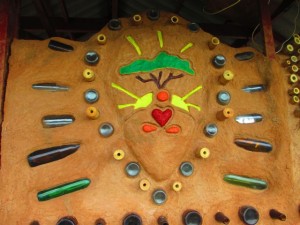
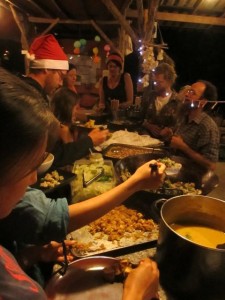

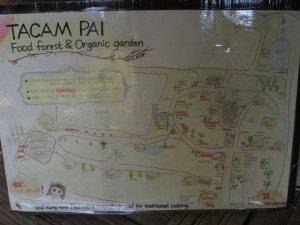
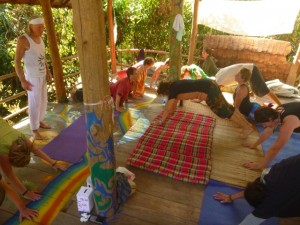
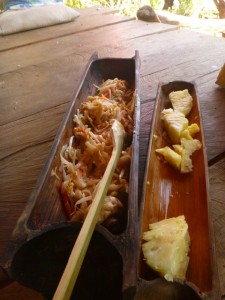
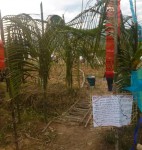


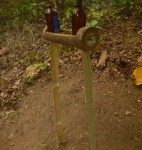
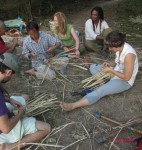
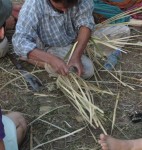
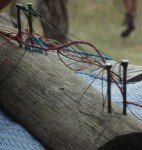
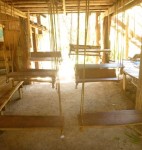
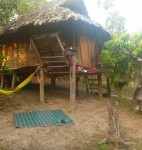

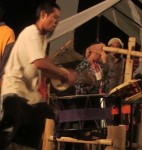
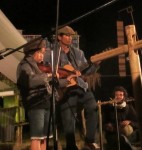


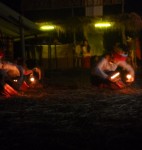
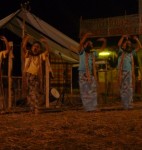
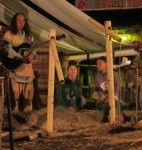
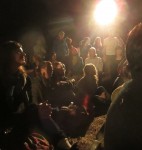
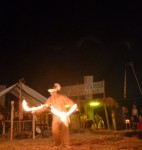

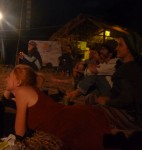
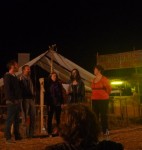
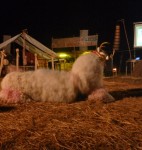
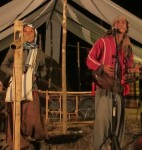
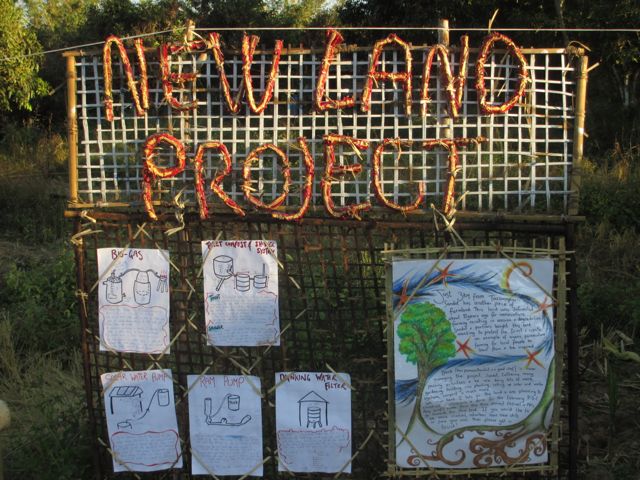
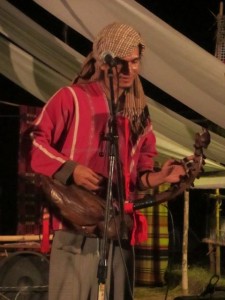
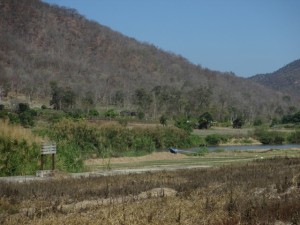
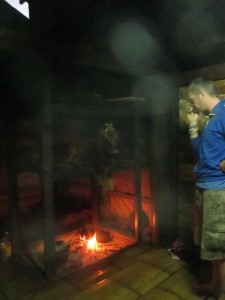
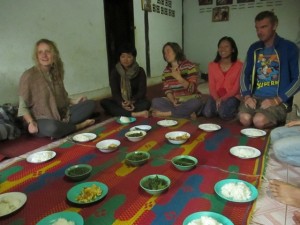
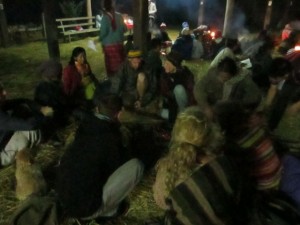
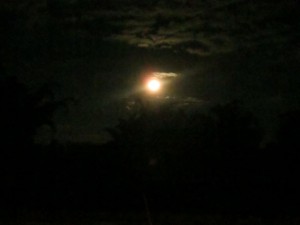
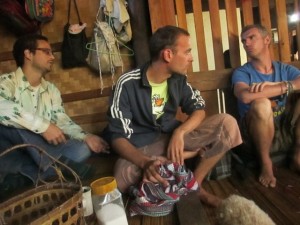

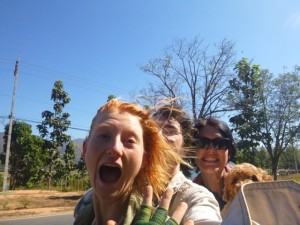
My review of Rak Tamachat:
I did the course in 2016, and it is totally different that what you describe: Christian is teaching at Panya and not at Rak Tamachat, i made the mistake which i regret…
Beau Wickbolt was a engineer in oil industry and does not believe in teaching permaculture. He is a billionaire boy and he still does not need your money but he needs people to pretend he has friends and/ or to entertain himself because he does “social experiments” as he openly says. His experiment is simple: he steps on you (physically, emotionally and mentally) and see how you react. He has a huge ego and you can not talk to him, he will never listen to you, he just need 2 ears to listen to his non-stop talk. Most people don’t dare to tell him that he is boring or even wrong so he thinks he knows everything, outsmarts everyone and he will always prove that you are just a stupid poor “hippy”. He despises permaculture and hippies so much, it is even insane to teach permaculture… The deep truth is that he just hope he can hook a girl…
People who works with him (residents, volunteers) know about it but they are delusional or lying to themselves, they think he is an “asshole” just when he drinks alcohol but it is not true, that is his personality all the time.
If i have a good advise: don’t go there because it is cheap : you will have an horrible time (unless you are totally masochist) and he will crush permaculture and all your dreams because that entertain him and you even pay him for it.
Sorry you had that experience. That is exactly why I left my position at Rak several months early. Most of my tenure there Beau was offshore. We spent months work on and developing systems and building community and he’d come in for a day and shatter all the hard work. I told him directly, more than once, that he needed to adjust his behavior and attitude, for his children’s sake if nothing else. He is actually a very sad and pathetic person.